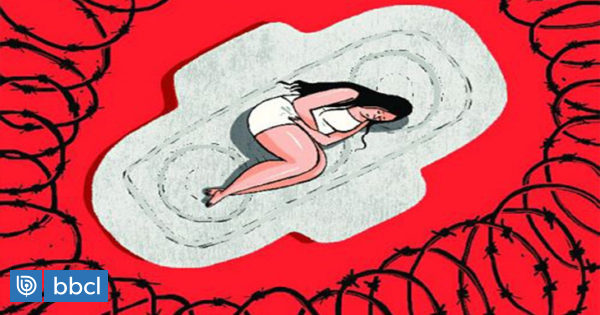
Every day, 800 million trans women and girls menstruate. Currently, it is estimated that 26% of the global female population is of reproductive age, according to Unicef, and a menstruating person would spend at least 7 years of their life menstruating if there were continuous days.
A survey by WASH United, the World Association of Girl Guides and Girl Researchers (WAGGS) and Unicef, revealed that one in four people who are menstruating between the ages of 13 and 35 said it has been more difficult to manage their menstruation since the arrival of COVID-19. Ina Jurga, the international coordinator of the Global Menstrual Hygiene Day, said in the same survey that 47% of these people had difficulty accessing menstrual supplies during the pandemic.
Unlike men, women go through a biological process once a month: menstruation. Sanitary pads, tampons, menstrual cups, special underwear, the options are varied, but access is not universal; and in many cases they are not even considered a basic need. A clear example of this was the aid baskets delivered by the Chilean government during last year’s quarantine. Various feminist and female groups have joined a social media campaign, criticizing the government: “We continue menstruation in quarantine”.
Before the pandemic, entries for this physiological process could be obtained in different places. Despite the fact that many have closed, the need has not diminished, so organizations around the world have coordinated to help and deliver products, due to the increasing number of people in need of COVID-19. Many people have lost their sources of income, have difficulty accessing basic needs and even risk being homeless; and some of them, while menstruating.
These people now have to buy these products themselves, even if they do not have the resources. According to the State of the period, a Thinx & PERIOD document, one in five teenagers had problems paying for menstrual products or simply could not afford it, and this before the pandemic, which further fuels the debate about menstrual poverty and difficult access to these products by parts of the population.
Grace Meng, a member of the United States Congress representing New York’s District 6, said in May 2020 that “menstrual equity is not a choice or a luxury. It is a human right, a right to health. In the current fight against COVD-19, the periods do not wait. Today, with more than 40 million Americans out of work due to the pandemic, the health and socio-economic challenges of people living in poverty during their time are increasing. Today it is more important than ever to guarantee that everyone who needs these products can get them. ”
Difficult access to Chile

In Chile, an estimated 15,000 people live on the streets, according to Hogar de Cristo, a foundation that served more than that amount in 2018. The official figure is nine years ago, 2012, and corresponds to information collected by the second cadastre. of homeless people. This file stated that 12,255 people were homeless, which is 5,001 more than those declared in the first version of the cadastre conducted in 2005.
Of this official figure, 16% were women: about 2,400. Most of these women are young, the average age is lower than that of men on the street. Most of these women explained that they are in this situation escaping violence in the family, partner or husband, among other reasons, as reported by the data provided by Data Voz Statcom in its report on homelessness conducted in 2017.
In interviews for this report, it was revealed that only 35% of women living on the streets have a job and that the income received is 36.5% lower than that of men. 79% of the women interviewed do not have social insurance.
In Chile, menstruating accounts for 51% of the total population. Last year, the Gente de la Calle Foundation launched its #MenstruarEnLaCalle campaign, which aimed to raise awareness of how people who menstruate and live on the streets experience menstruation. On their website, she explains that “the idea came from the concern of Carla Fernandini, Executive Assistant of the Foundation, about the social stigma that revolves around this biological process. Also, the concern about the injustices associated with the pink tax that triggers situations such as menstrual poverty.
The annual expenses of a person with menstrual products in our country would be around 48,000 pesos, according to a bill presented in 2019 by 30 senators, including Isabel Allende, Guido Girardi, Yasna Provoste, Ximena Rincón and Manuel José Ossandón .
In January 2020, resolution 663 was adopted by 133 votes to the Chamber of Deputies. It “calls on the President of the Republic to send a draft law providing for the free distribution of menstrual hygiene products in state-funded educational institutions, public health centers, prisons, shelters and people living on the streets,” as stated. in the Chamber’s press room.